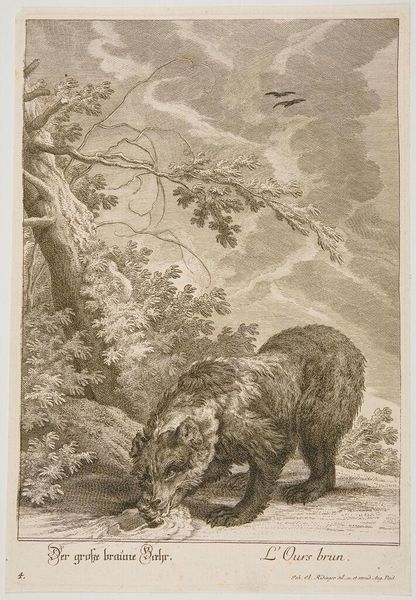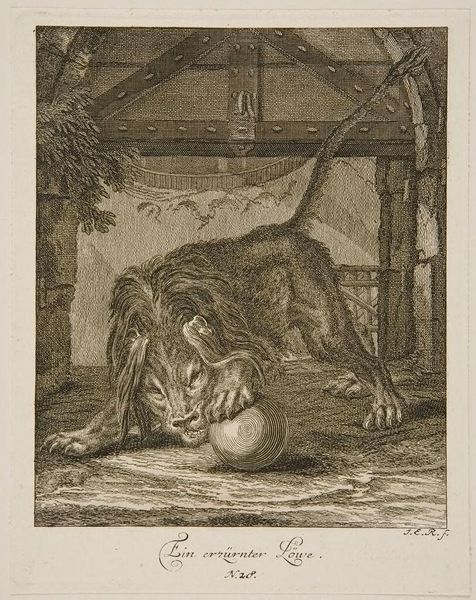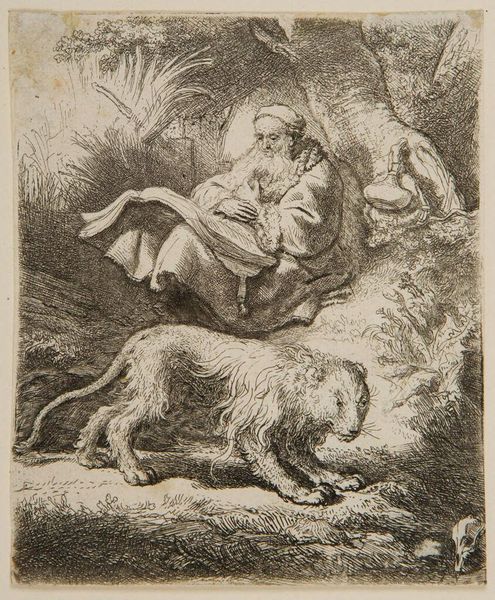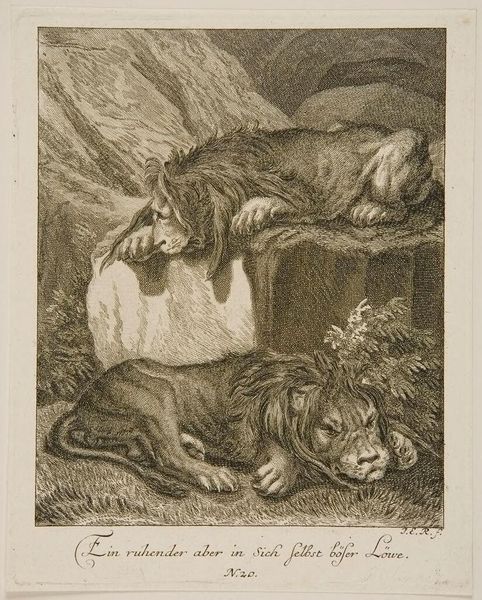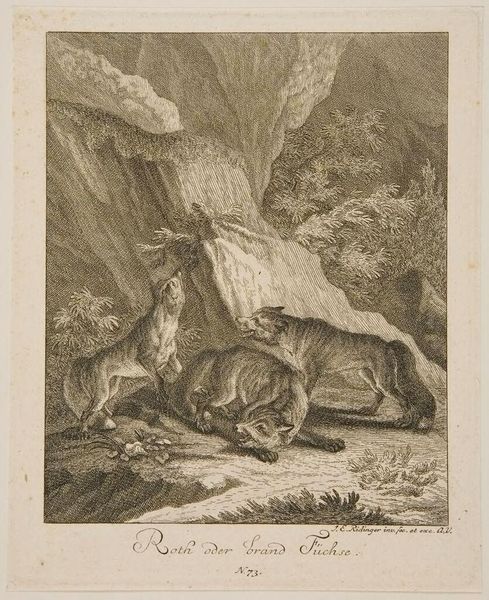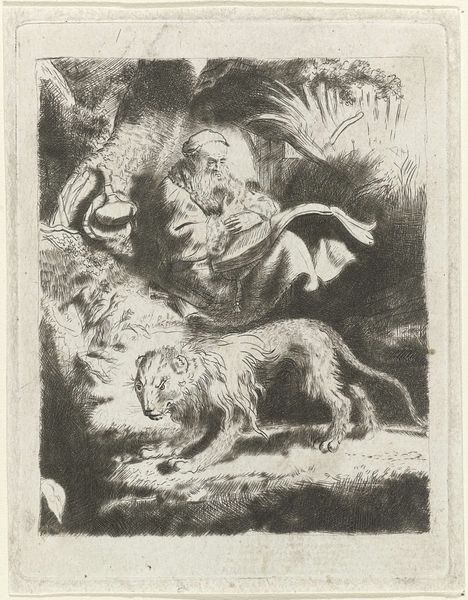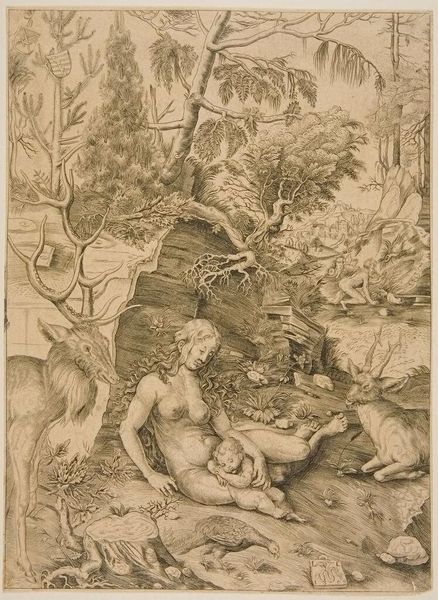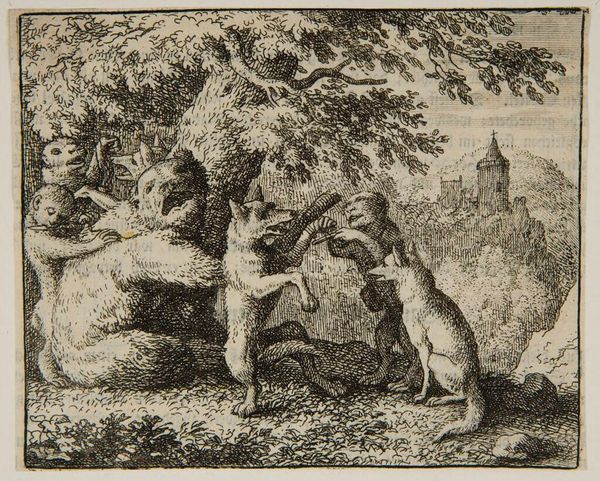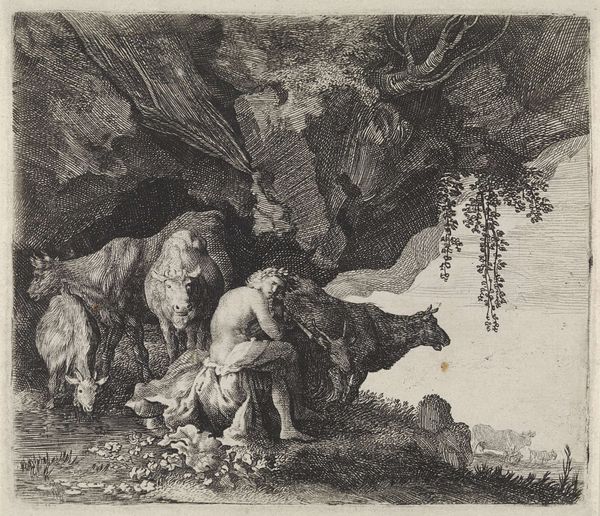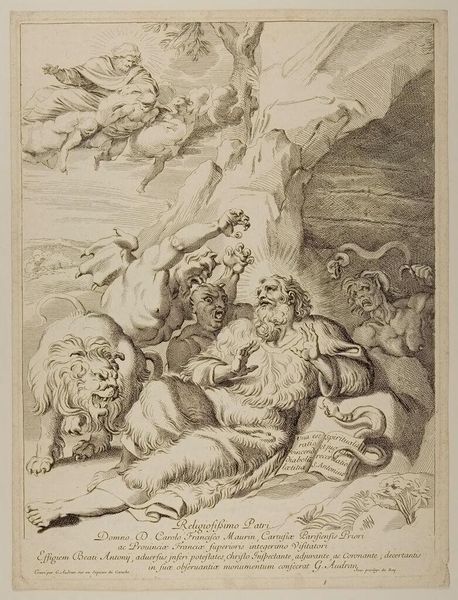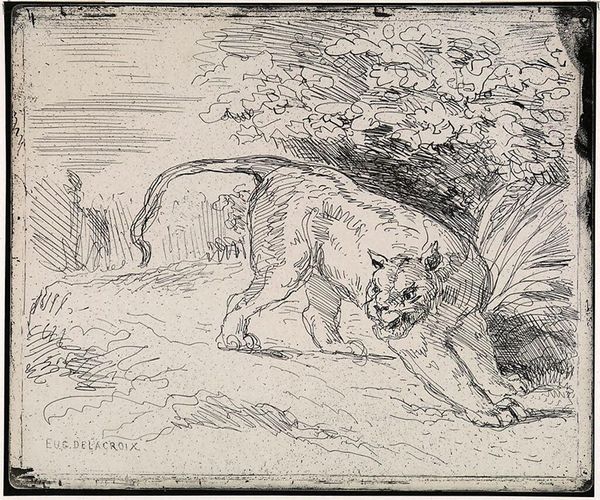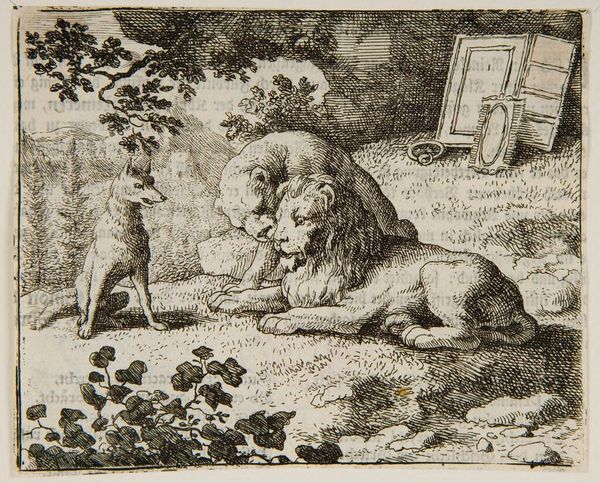
White Bear 17th-18th century
Copyright: CC0 1.0
Curator: This is Johann Elias Ridinger's "White Bear," an engraving that captures a polar bear in a rather unexpected, almost theatrical pose. Editor: It's certainly striking. The bear looks so…humanized, almost docile, despite the wild, rocky backdrop. The symbolism feels incredibly potent. Curator: Indeed, bears, and especially white bears, carried a lot of weight. They represented untamed wilderness, but also royal power, since bear hunts were the domain of nobility. Ridinger, however, was also critiquing the colonial impulse. Editor: I notice that, especially given its position in front of what look like trees. The composition highlights the tension between nature tamed and nature as a raw, powerful force. This tension echoes the impact colonialism had on indigenous populations. Curator: Absolutely. The image invites us to consider how power is projected onto the natural world and how that affects both the animals and the people who share their spaces. Editor: It leaves a rather unsettling aftertaste, doesn’t it? A reminder of ongoing power dynamics. Curator: It does. The work acts as a mirror, reflecting back our own biases and assumptions.
Comments
No comments
Be the first to comment and join the conversation on the ultimate creative platform.

